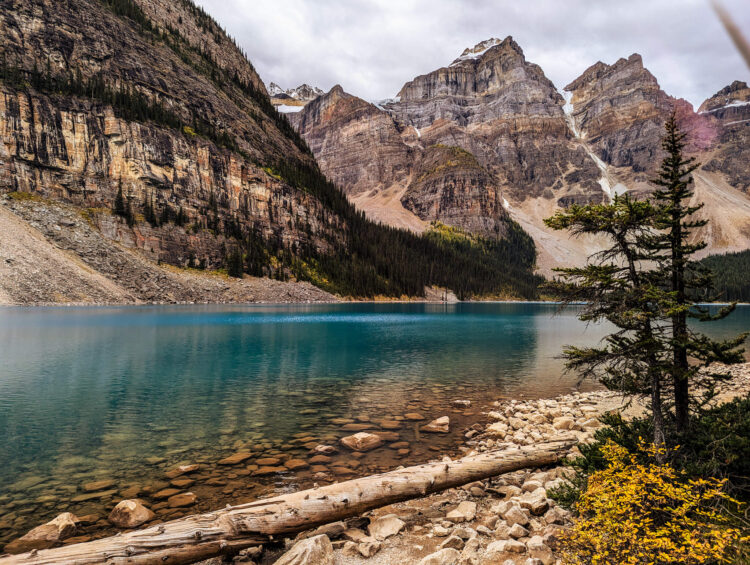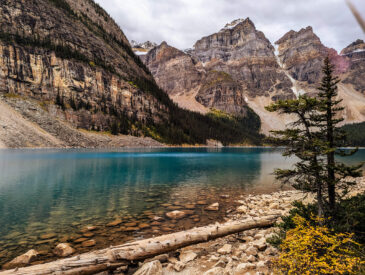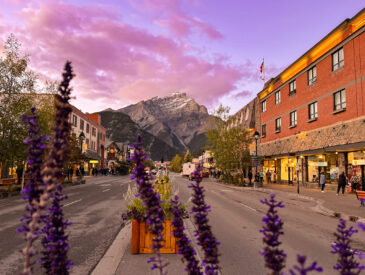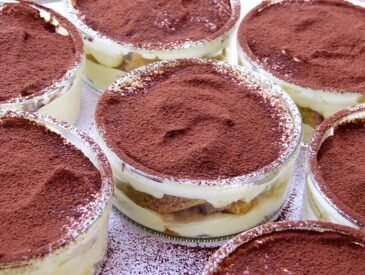Banff National Park is nestled into the heart of the Canadian Rockies and is recognized as a UNESCO world heritage site. It is truly one of the most incredible landscapes that I’ve ever seen; jagged mountains cradling unbelievably vibrant lakes, and wildlife make for an unforgettable stage for the dazzling aurora borealis. This area is so beautiful. No wonder travelers flock here from around the globe to enjoy the dramatic scenery, luxury hotels, and soothing natural hot springs. There’s a lot to do in this area, I felt overwhelmed with my own trip planning. Here are my top recommendations for the area to help you plan your dream trip to Banff National Park.
What to do in Banff National Park
Explore the incredible blue glacial lakes of the Canadian Rockies
Lake Louise is an iconic, beautiful glacial fed lake. The waters are a startlingly vivid turquoise and the scenery is astounding. It attracts many tourists, so the boardwalk can get very crowded at peak times. But the densest area of admirers is the front of the lake—it’s the first view of the lake coming from the parking lot, and it stops people in their tracks. There’s plenty of space to spread out in the plentiful surrounding hiking trails (both easy and challenging) or into the lake itself via canoe. What to do in Lake Louise is detailed here, along with essential parking and accessibility tips.
Moraine Lake: The Most Instagrammable Spot in Banff. If your mind is not completely blown by lake Louise, wait until you see Lake Moraine. I think it’s even better. The lake is surrounded by the famous 10 peaks, and was the scene on the back of Canada’s 20$ bill. Here you can find hikes with the best views in Banff. The trails are genuinely legendary and you simply can’t miss this experience. The area is less developed than Lake Louise, but has incredible hikes. Read on for a Lake Moraine Travel guide, with what to do and helpful hints.
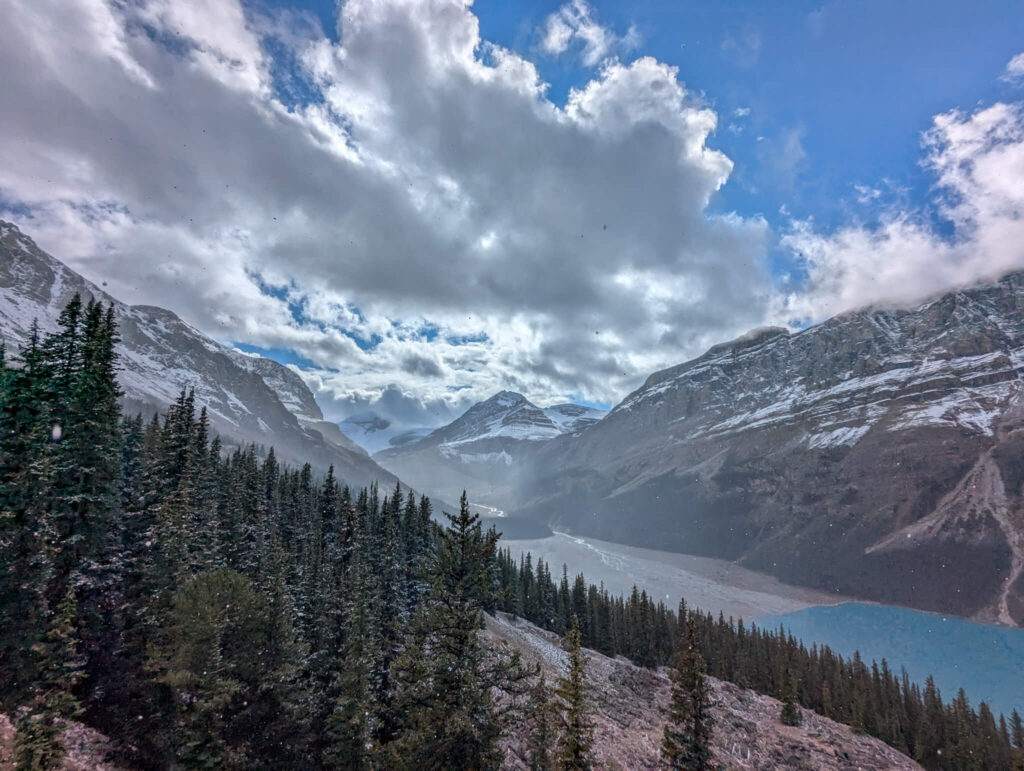

Peyto lake (it’s pronounced PEA-toe) is about an hour (100 km) north of the town of Banff, but don’t let the distance deter you. It is accessible via the Ice Fields Parkway, which is an incredibly scenic drive that connects Banff to Jasper National Park. The drive is so beautiful, surrounded by the Canadian Rockies the whole way with plenty of chances to view wildlife. Entrance to the Parkway, and then Peyto Lake requires a National Park Pass and is checked at ticket booth. Peyto lake is another absolute must-see sight. It’s famous not only for the remarkably bright turquoise water, but because the lake is shaped like a wolf! It’s so cool.
Bow Lake is another crystal clear glacial fed lake along the Icefields Parkway. It’s also surrounded by astounding scenery. In the summer, the lake offers a lot of recreation: water sports, picnic areas and the Bow Falls Trail that ends at a massive waterfall.
Take a Scenic drive and wildlife spotting
Ice fields Parkway is one of the most scenic drives in the world. Stretching between Banff and Jasper National Parks, this unbelievable highway winds through the Canadian Rockies, turquoise lakes, and massive glaciers—the drive itself is a can’t miss adventure. This route will take you to many of the best sites in the Banff, like Peyto and Bow Lakes, and the Columbia Icefield, where you can stop for epic photos or even walk on a glacier. There are also many scenic pullouts, so take your time, soak in the views and and watch for wildlife like bighorn sheep and mountain goats.
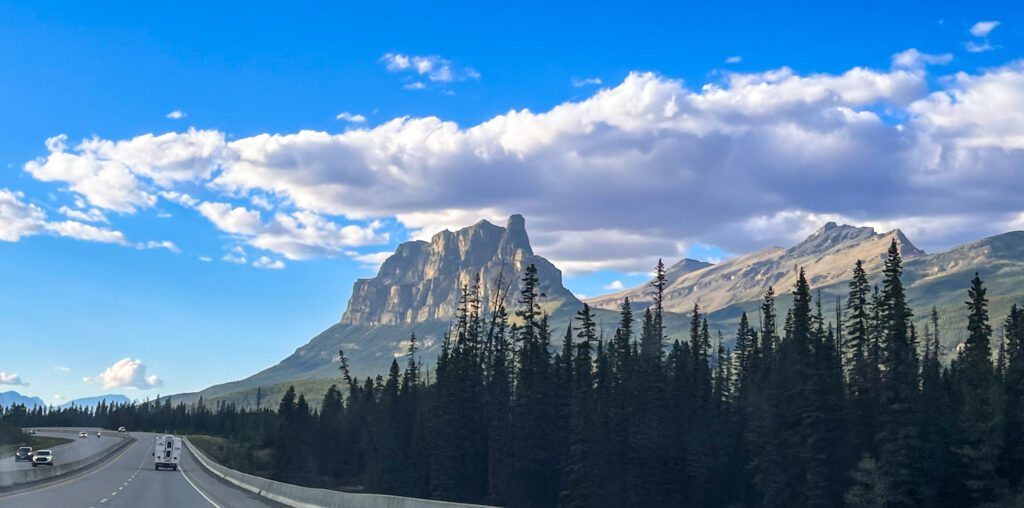
For another scenic drive take the Bow Valley Parkway, which runs between Banff and Lake Louise, parallel to the Trans-Canada Highway (AB-1). Unlike AB-1, the Bow Valley Parkway doesn’t have wildlife overpasses, meaning you have a better chance of spotting bears, elk, and deer along the way—so drive cautiously and keep your camera ready! Some of the best stops along this scenic route include Castle Lookout, the famous Morant’s Curve, and Johnston Canyon (more info here), where you can hike to waterfalls tucked into a chiseled limestone canyon. As always, respect the wildlife, keep your distance, and never feed the animals (it’s illegal).
Relax in Banff’s Hot Springs
Did you know that Alberta has many natural hot springs? One of the best ways to unwind after a day of hiking or sightseeing in Banff National Park is by soaking in these naturally heated, outdoor spas with gorgeous mountain views. Check out the Upper Banff Hot Springs, Radium Hot Springs, or Miette Hot Springs for a great experience any time of year. In the summer, the therapeutic mineral water of the hot springs will take the edge off sore muscles. In the winter time, of course, the snowy landscape is gorgeous. What better viewpoint to take in the drifting plump snowflakes or peachy sunsets than from the steamy outdoor tub? Nothing can top that.
Explore the town of Banff
Spend some quality time enjoying the town of Banff. This charming village is cradled by snow-capped mountain peaks and is incredibly scenic. Yet, it has so much to offer, from delicious local food, the famous Banff Avenue, luxurious spas, and the birthplace of the national park: the historic cave and basin. There’s plenty more gorgeous natural attractions easily accessible from town including the Cascade Ponds, and lake Minnewanka, the largest lake in the area with a spooky backstory. Exploring the town of Banff can easily take a whole day, if not more so I have a more detailed post here.
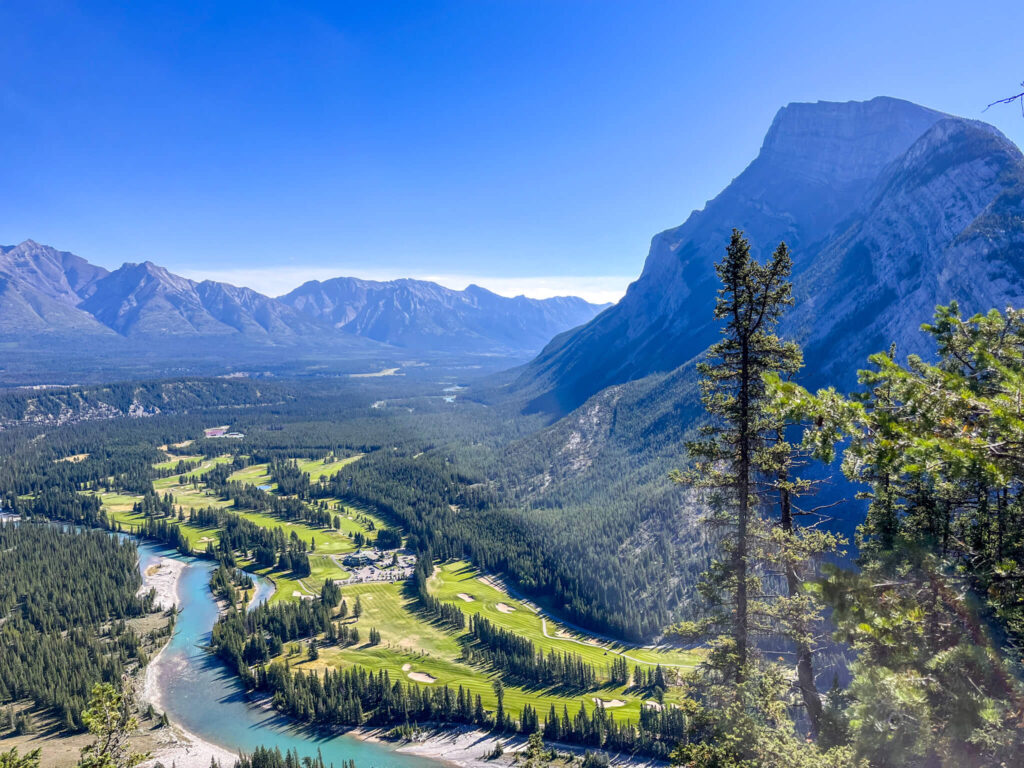

Canmore & the Kananaskis: An off the beaten path hidden gem near Banff
Just a 15min drive from Banff, the town of Canmore and the Kananaskis region offer a more laid-back, authentic small-town vibe. Canmore’s walkable downtown is packed with independently owned shops, craft breweries, and fantastic local restaurants. In contrast, the town of Banff has more nationally recognized brands and feels more “commercial”. Whether you’re browsing local art galleries, sipping a pint from the Sheepdog brewery, or exploring the Kananaskis, this town has plenty to offer for a whole day trip or more.
When visiting Canmore be sure to explore Grotto Canyon and the Gassi Lakes area, an easy and accessible set of hiking and mountain bike trails with great views of the mountains and another glacial blue-green lake. It’s one of the most popular stops in Canmore.
When to Visit Banff National Park: Choosing the Best Season for Your Adventure
The best time to visit Banff National Park depends on what kind of experience you’re after. Each season offers something special—whether it’s golden fall colors, summer sunshine and swimming, or soft snow-carpeted winter landscapes. Here’s what you need to know to time your trip perfectly:
Fall (Mid-September to Early October) – The Best-Kept Secrets and my personal favorite
Fall is the ultimate time to visit Banff—crowds are dwindling and the weather is still great. The best part of fall? LARCH SEASON!! An ephemeral, completely magical time of year from the third week of September to early October, when the larch trees turn yellow and set the mountain sides ablaze with a warm golden glow. This is great time of year for landscape photography because it’s an incredible sight.
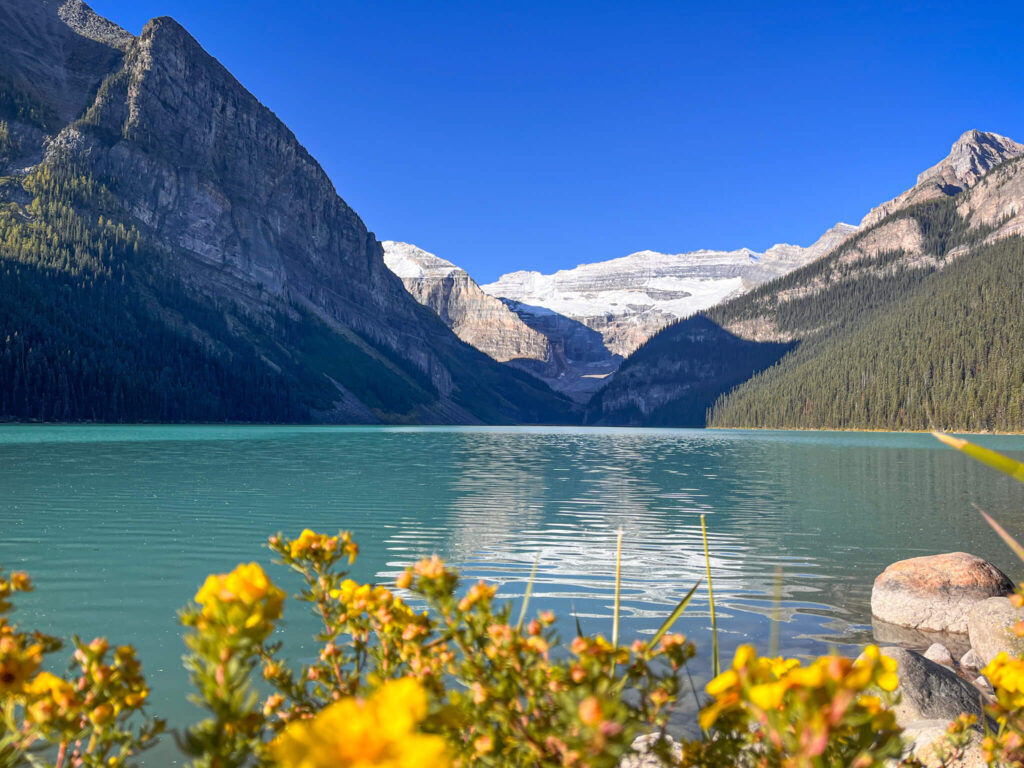
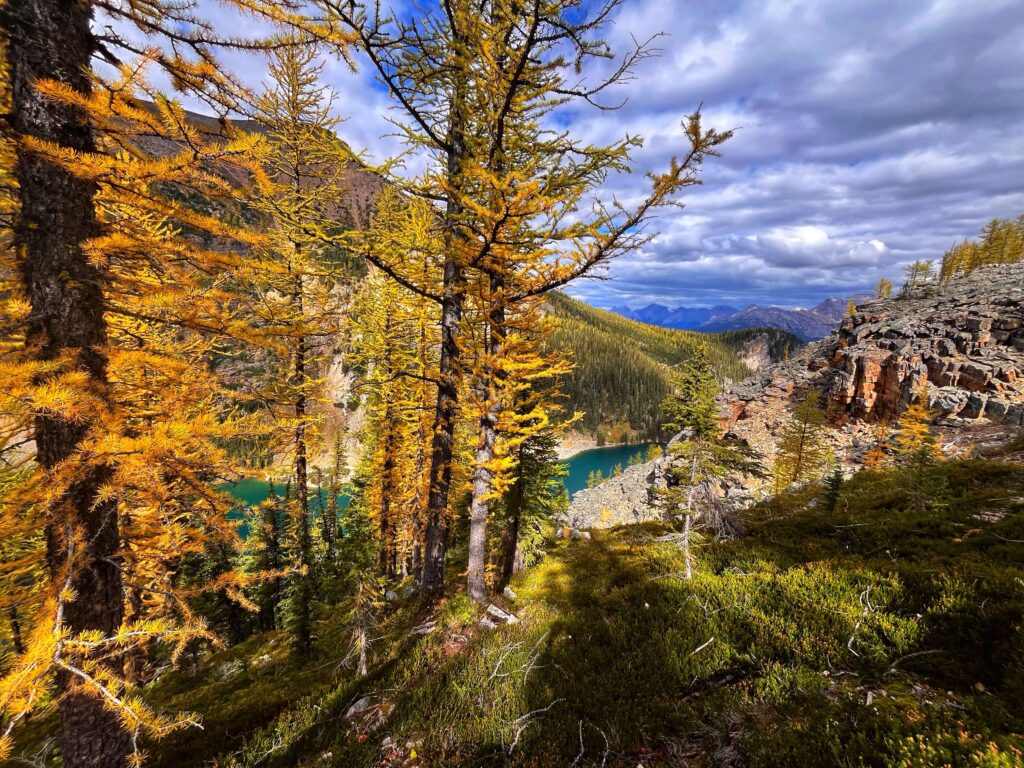
I love the fall weather in Banff; it’s the best of all worlds. The flowers are still blooming but leaves are beginning to change. Morning frost that gives way to warm sun, but sudden snow storms are still possible. Fall in Banff gives you a taste of all seasons in one trip. Just be prepared for rapidly changing weather—pack layers for rain, wind, sun, and even surprise snow showers (N.B. even in summer, brief snowfalls can happen in the Rockies!).
Spring (April to Early June) – Fewer Crowds & Emerging Wildlife
Spring is another underrated time to visit Banff, especially if you want quieter trails and budget-friendly accommodation. As the snow melts, waterfalls roar to life, wildflowers start to bloom, and wildlife becomes more active—making it a fantastic season for photography and animal spotting. However, some hikes may still be closed and snowy, but most things are open by mid-may. The teahouses don’t open until the summer season. You should check the local conditions and schedules for scheduling spring trips. Also, spring snow is still a distinct possibility.
Summer (Mid-June to Early September) – Peak Season with Perfect Weather
Summer in Banff is lovely but busy. Long daylight hours and warm temperatures (59–77°F) allow for extra time to explore. However, crowds are at their max and leads to packed parking lots, long lines at the teahouses, and everything is booked to capacity. To make the most of summer in Banff, plan ahead, book in advance, and start your hikes early in the morning. But don’t let the crowds dissuade you; Banff is not worth passing up. In my experience, people in Banff are so nice.
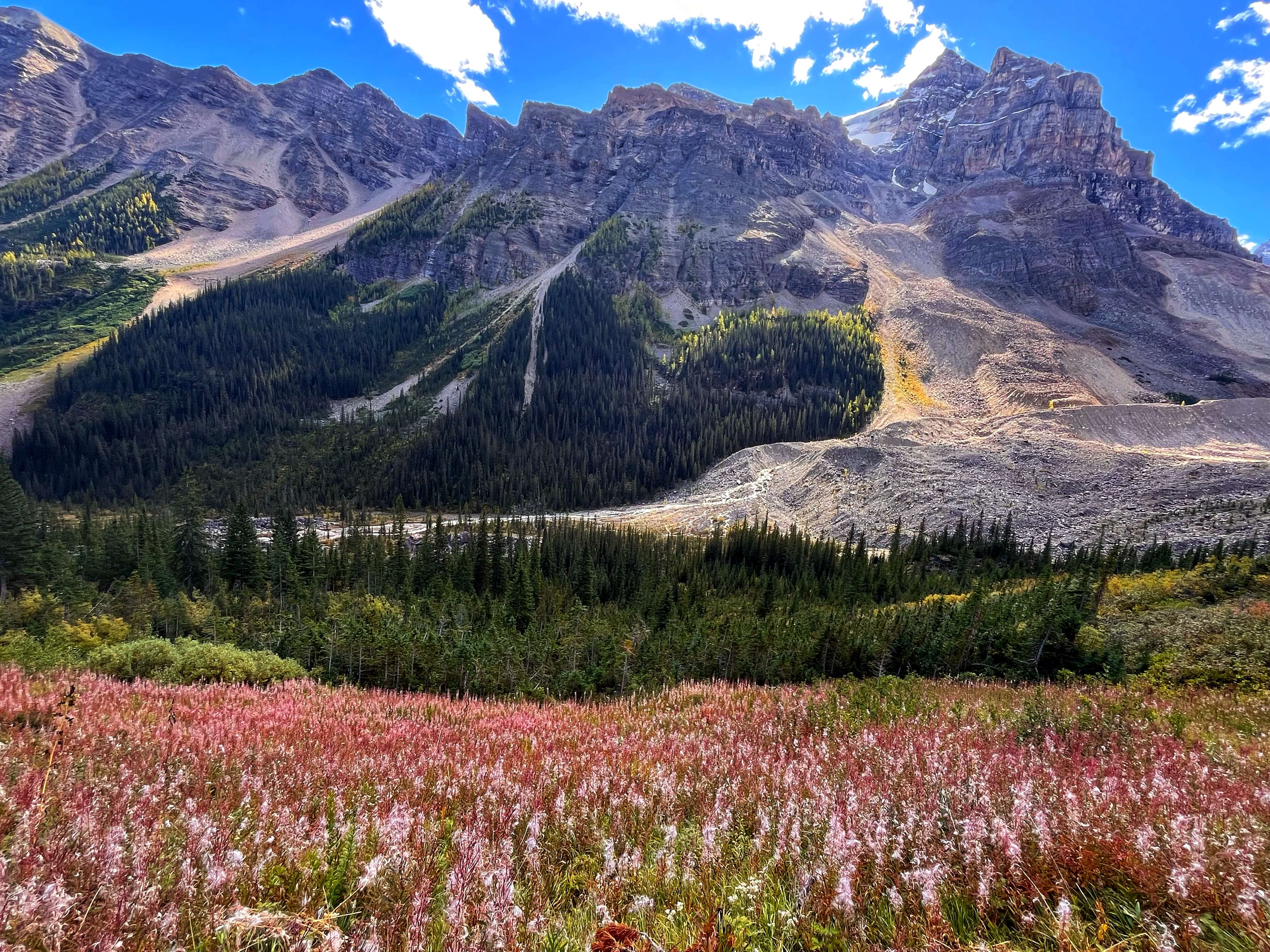
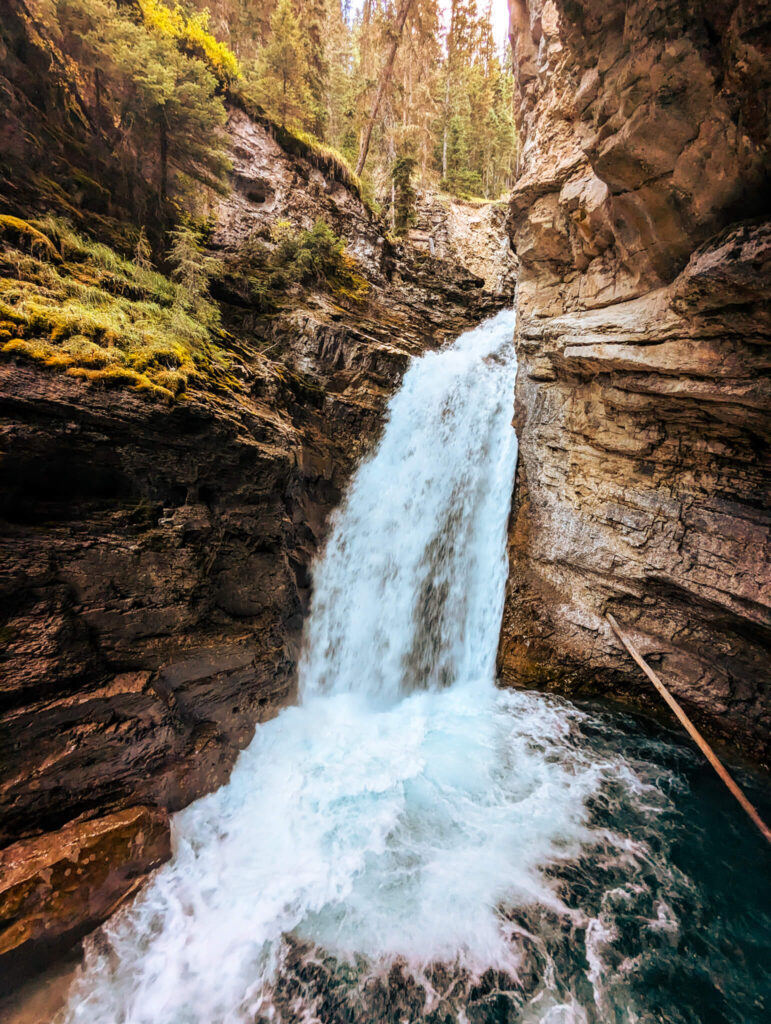
Winter (November to March) – A Snowy Wonderland
Winter in Banff is a whole other experience, transforming the park into a snowy wonderland. Banff is, of course, a haven for excellent skiing and snowboarding at world-class resorts like Lake Louise and Sunshine Village. Other winter activities include Ice skating on Lake Louise, or winter photography (the landscapes are magical). Christmas celebrations give way to SnowDays, a winter festival in January showing off impressive snow and ice sculptures. Also, be aware that the Rockies are in avalanche territory, so be mindful of the risks.
Other Travel tips for Visiting Banff National Park
- Visiting the national park, including the town of Banff, requires a park pass. The park pass can be purchased online in advance— and you need a printed copy. This will allow you by pass a lot of traffic that piles up around the booths.
- Download the city’s parking app in advance (Blinkay). This will allow you to quickly pay for on street parking, as the majority off spaces are not free.
- Park for free in the Town of Banff at the train station.
- The public transit system (ROAM public transit) will shuttle you to points of interest for 5$. This is a great deal, but the tickets sell out fast, and long lines form at peak times. You may want to book alternative transportation options to avoid missing out on certain excursions.
- Be bear aware: Hike in groups of at least 4, and carry bear spray. Often, other tourists will leave their bear spray (pepper spray for bears) at the hotel since it’s not allowed on planes, so ask around.
- Drive carefully. The park has installed many to wildlife bridges to reduce animal car collisions, but the area is remote and there’s a ton of wildlife around. However, you may drive down the scenic Bow Valley Parkway, a smaller road connecting Lake Louise to Banff- this will increase your odds of seeing wildlife, but be extra cautious. Sometimes cars will slow down or stop if there is an animal to admire. Whatever you do, don’t get out of the car- it might eat you.
Visiting Banff National Park and Alberta, Canada was an absolute dream come true. I have seen a lot of gorgeous mountain landscapes, but Banff has a unique magic all its own. I hope I’ve inspired you to visit the park and helped plan your trip.

